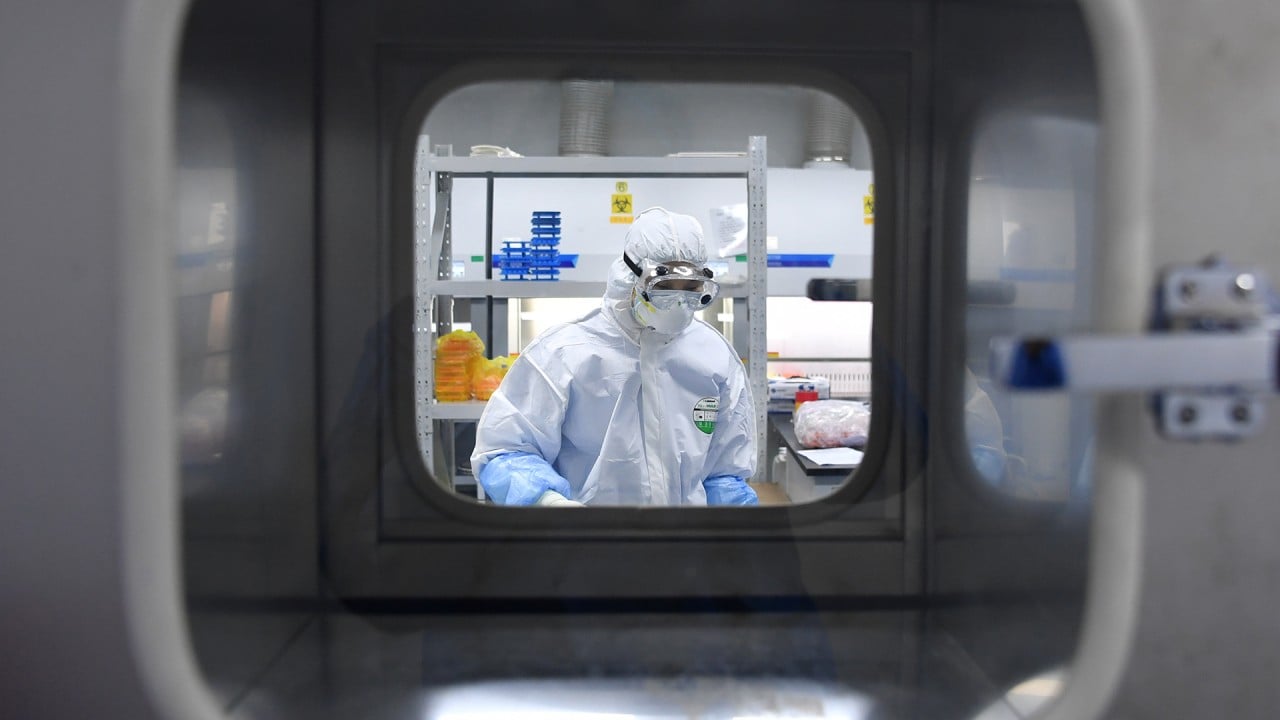
02:08
China says no evidence to suggest coronavirus virus came from Wuhan’s lab

The head of a top Chinese laboratory dogged by coronavirus conspiracy theories has again rejected suggestions that it leaked the pathogen, saying the institute “had never discovered or kept” the virus before it erupted in central China late last year.
In an interview with state media on Saturday, Wang Yanyi, director of the Wuhan Institute of Virology, said it was “pure fabrication” that the coronavirus leaked from the lab, leading to the global pandemic.
Wang said the institute first received a clinical sample of the then unknown pneumonia on December 30. After checking the pathogen, the researchers found it contained a new coronavirus, which is now called Sars-CoV-2, she said.
“We didn’t have any knowledge before that, nor had we ever encountered, researched or kept the virus. In fact, like everyone else, we didn’t even know the virus existed. How could it have leaked from our lab when we never had it?” Wang told state broadcaster China Global Television Network.
She also said the institute did not isolate or obtain the live virus of the RaTG-13 bat coronavirus, which shares 96.2 per cent of the genome of Sars-CoV-2.

02:08
China says no evidence to suggest coronavirus virus came from Wuhan’s lab
Senior American officials have accused the institute, the first in Asia equipped to handle Class 4 pathogens such as Ebola, of being the source of the coronavirus pandemic, which has killed more than 340,000 people around the world.
US President Donald Trump and Secretary of State Mike Pompeo have both claimed that there is evidence the pathogen is connected to the lab in Wuhan – the city where the disease was first detected late last year.
Some of the speculation is based on an article the institute published in Nature in April 2018, saying it discovered a novel coronavirus originating from bats.
In February this year, it published another article in Nature saying another novel coronavirus from bats was discovered, and the similarity between this virus and the Sars-CoV-2 is up to 96.2 per cent.
“Actually, the virus mentioned in the 2018 article wasn’t Sars-CoV-2. The virus in the article mainly causes diarrhoea and death among piglets. It was later named Sads. The genome sequence of Sads is only 50 per cent similar to that of Sars-CoV-2. It’s a rather big difference,” she said.
The bat coronavirus that had a 96.2 per cent genomic similarity to Sars-CoV-2 was RaTG-13, she said.
“From the perspective of many non-professionals, the similarity rate of 96.2 per cent is a very high number. But coronavirus is one of the RNA viruses that have the largest genomes.
“Take the Sars-CoV-2 for example. Its entire genome contains about 30,000 bases. The difference of a percentage of 3.8 means the difference of over 1,100 nucleotide positions. In the natural world, it takes a long period of time for a virus to naturally evolve and mutate to become Sars-CoV-2.”
Although the researchers identified the genome sequence of RaTG-13, they did not isolate nor obtain the live virus of RaTG-13. “Thus, there is no possibility of us leaking RaTG-13,” she said.
Wang said that a team at the institute had been on the trail of the source of Sars – severe acute respiratory syndrome – for many years and had obtained some coronaviruses from bats.
She said the institute now had three strains of live viruses, including one that was 96 per cent genomically similar to the Sars virus. But their highest similarity to Sars-CoV-2 was only 79.8 per cent, she said.
The present consensus of the international academic community is that Sars-CoV-2 originated from wild animals.
But scientists still do not know clearly what kind of viruses the world’s various wild species carry and where the viruses that are highly similar to Sars-CoV-2 are. This was why scientists around the world needed to cooperate to find the answers, she said.
“The issue of origin-tracking is ultimately a question of science, which requires scientists to make judgments based on scientific data and facts,” she said.
But with the disease now infecting more than 5 million people, the pandemic has driven the deeply fraught US-China relations to the brink of an all-out confrontation, with the origin of the pandemic at the heart of the blame game.
There have been calls for an investigation into the source of the virus in China. At the World Health Assembly last week, Chinese President Xi Jinping said his country supported a comprehensive review of the pandemic, once it was under control.
China had opposed earlier calls for similar investigations from the United States and Australia, but Xi said the country would be open to an impartial review that shared lessons and highlighted weaknesses, led by the World Health Organisation.